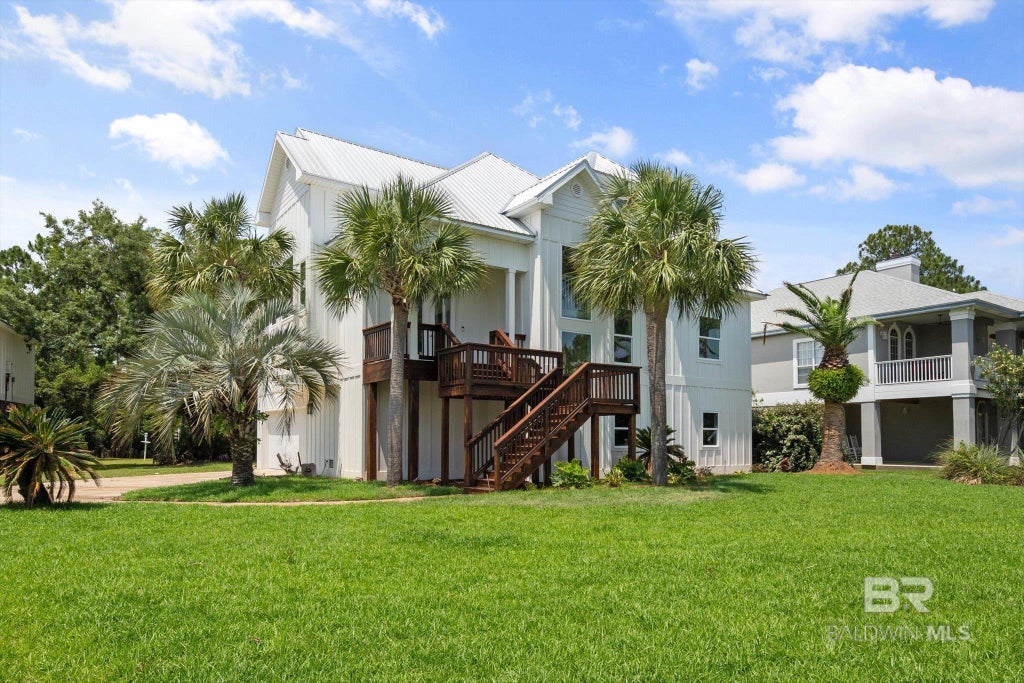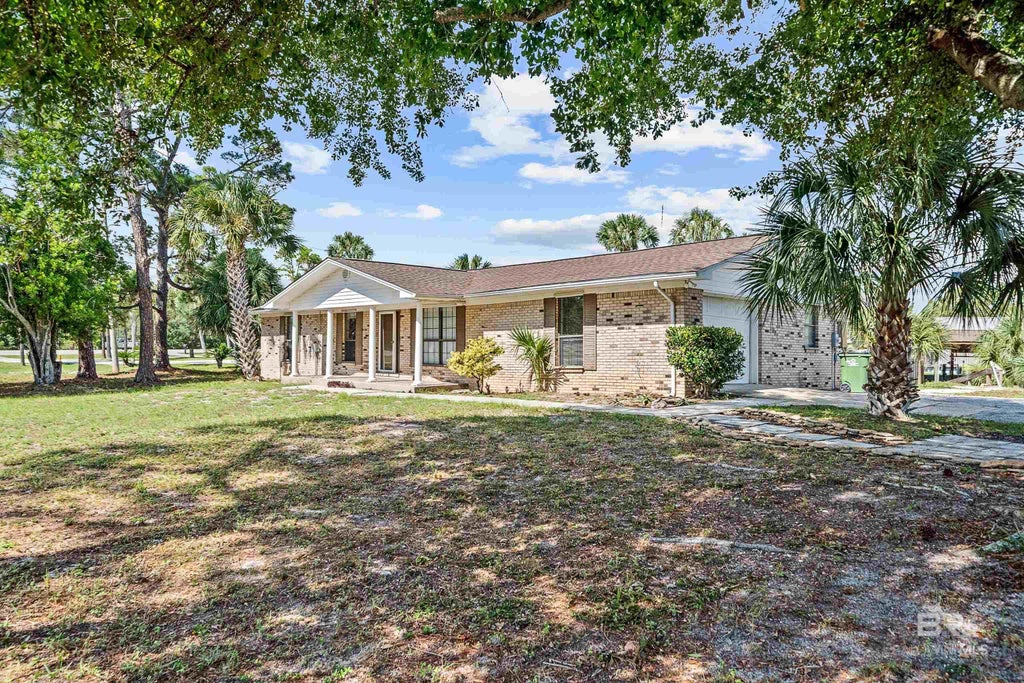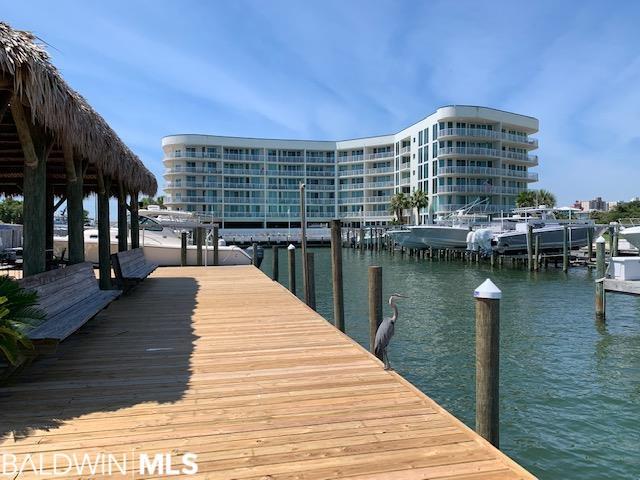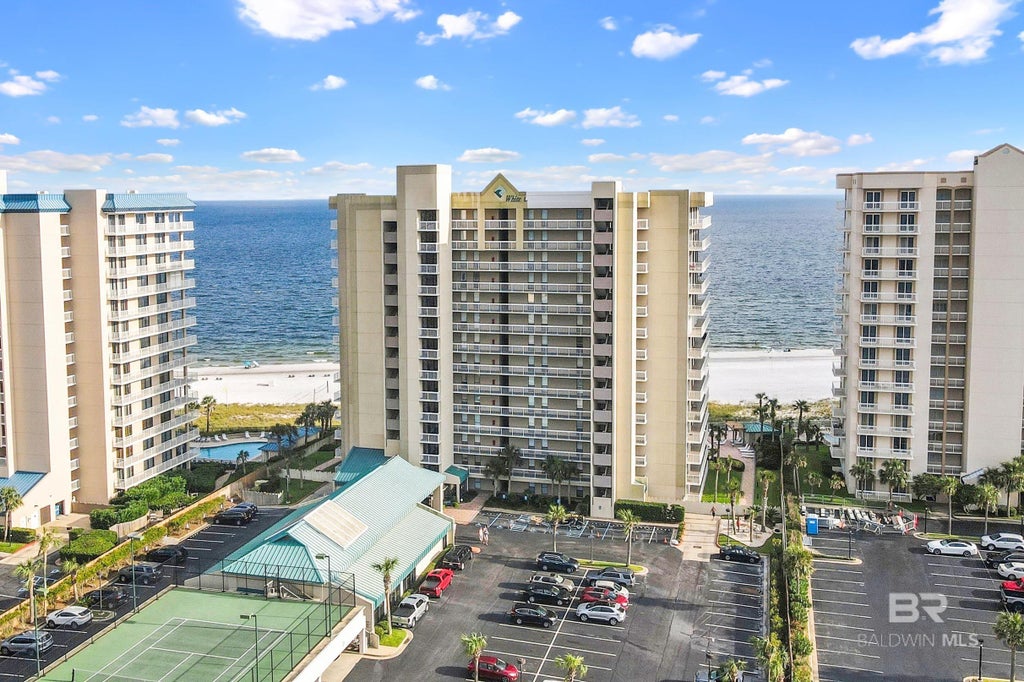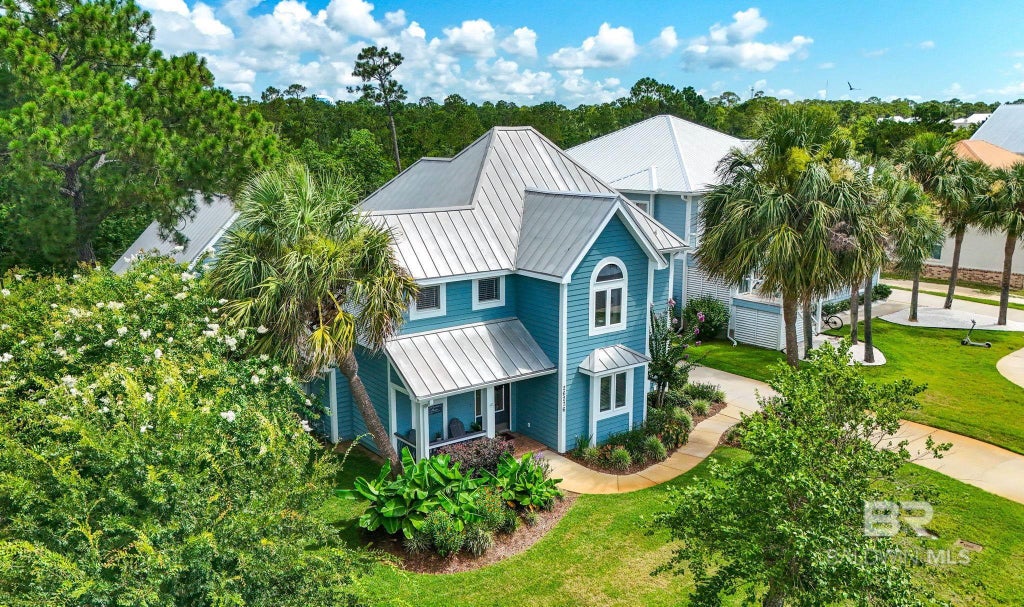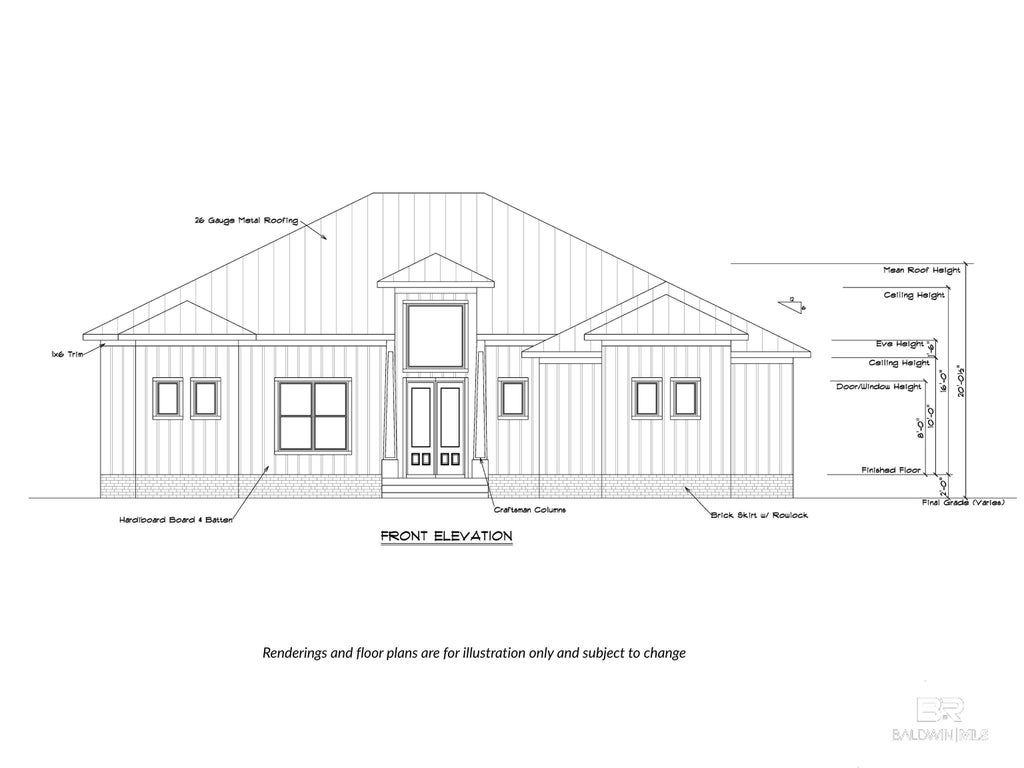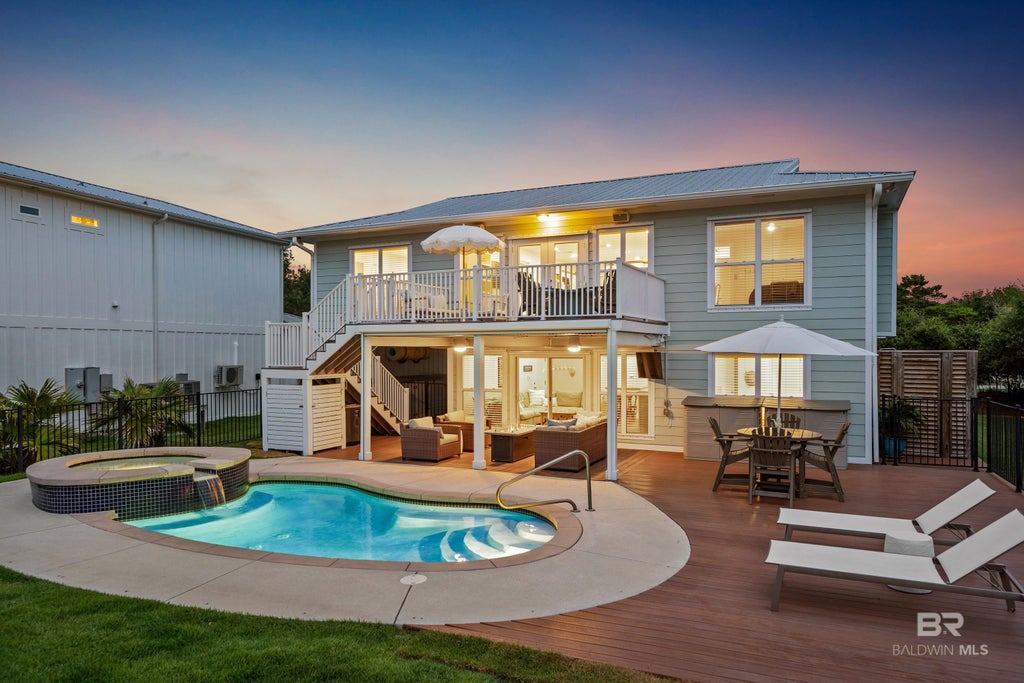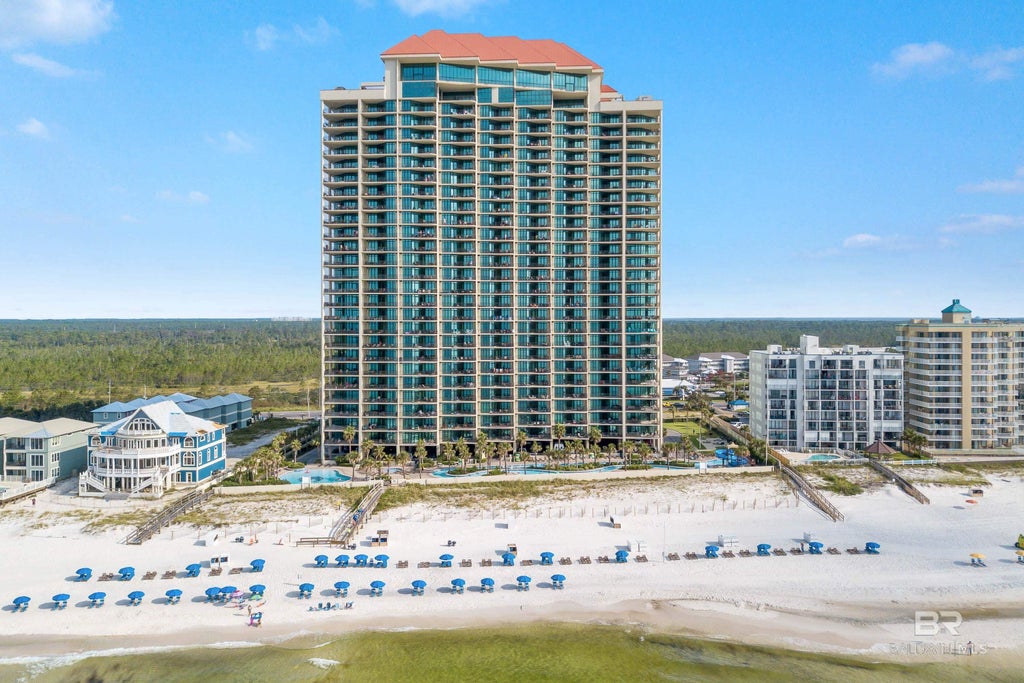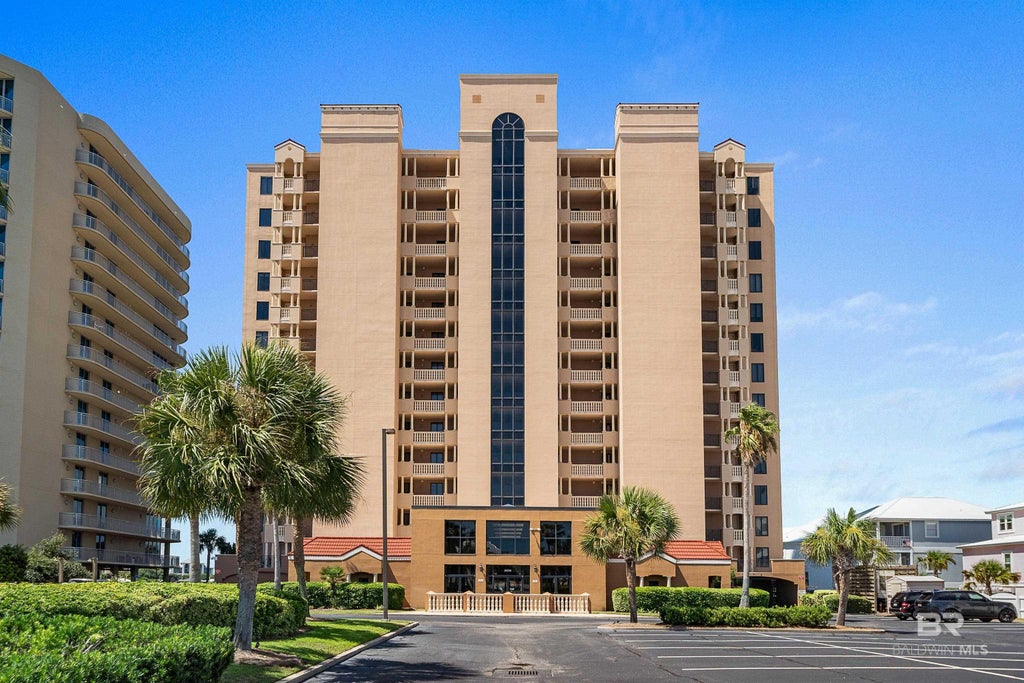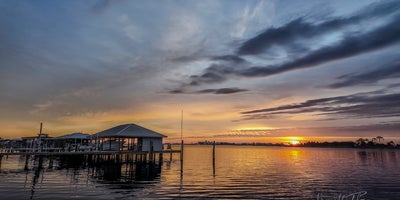Garage Doors on the Gulf Coast: One Wide Door vs. Multiple Bays and Modern Height Planning
_(800_x_150_px)_(2).gif)
I’m often asked whether a multi-bay garage should use one large door spanning all bays or individual doors for each bay. Below are practical notes shared with me by local Gulf Coast builders—paired with what I regularly observe around Orange Beach and Ono Island.
One Large Door (spanning all bays)
Advantages
-
Maximum maneuverability: Easier to back in larger SUVs, trucks, golf carts, or a trailer without threading between posts.
-
Flexible space use: Open span is ideal for workshop layouts, home gyms, or boat detailing.
-
Cleaner facade: A single, wide door can read modern and simplified on contemporary elevations.
-
Fewer moving parts: One opener, one set of tracks, one torsion system to service.
Disadvantages
-
Wind and structure: A wide opening increases wind loads. Along the Gulf, you’ll likely need a heavier wind-rated door and a stronger header or steel beam, which adds cost and engineering.
-
Single-point failure: If the opener or spring fails, every bay is blocked.
-
Energy loss and noise: A large panel dumps conditioned air faster when open and can transmit more noise to rooms above.
-
Security and privacy: Opening one big door exposes the entire garage at once.
Multiple Single Doors (one per bay, side-by-side)
Advantages
-
Redundancy: If one opener fails, the other bays still function.
-
Energy and comfort: Smaller openings reduce air exchange and humidity intrusion when a single car comes and goes.
-
Hurricane performance: Smaller, properly wind-rated doors are easier to brace, and the narrower openings can help the wall system resist uplift and racking.
-
Classic curb appeal: Suits traditional or carriage-style elevations and breaks up massing on a wide façade.
Disadvantages
-
Tighter maneuvering: Center posts and narrower clear widths can make parking wide vehicles and trailers more tedious.
-
More components to maintain: Multiple openers, seals, photo eyes, and remotes.
-
Higher count, similar cost: Three quality doors and openers can meet or exceed the cost of one large premium door.
-
Interior layout constraints: Posts between bays can limit workshop benches or side-swinging door clearance.
Coastal and Code-Driven Considerations
-
Wind ratings: Specify doors with appropriate design pressures for our zone; wider openings generally require higher ratings and stouter framing.
-
Corrosion resistance: Stainless or coated hardware, marine-grade bottom seals, and insulated panels help in salt and humidity.
-
Power and backup: Belt-drive DC openers with battery backup keep things moving during brief outages; smart controls can alert you if a door is left open.
-
Conditioned space above: Insulated doors, jambs, and quiet openers reduce noise and thermal transfer to rooms overhead.
-
Use case: If a bay must accept a trailer or oversize vehicle, one large opening is friendlier. If each bay serves a different purpose (vehicle, workshop, gear), individual doors keep zones separate and secure.
Garage Heights for Modern Needs (Boats, Vans, Utility Vehicles)
Local builder trends are moving taller to serve boats on trailers, high-roof utility vans, and lifted vehicles. A few planning notes I’ve learned from the field:
-
Set the target clearance first: Measure the tallest point of what you plan to store—including T-tops/towers, roof racks, antennas, or rooftop A/C units on vans.
-
Door height strategy: Common residential door heights are 8’, 9’, 10’, and 12’. Tall center bays with a 10’–12’ door are increasingly popular for high-roof vans and many bay boats on trailers.
-
Ceiling height and track type: High-lift or vertical-lift track paired with a wall-mounted jackshaft opener preserves headroom for racks, lifts, or a towered boat.
-
Structure and wind: Taller/wider doors need deeper headers, additional bracing, and higher wind-load ratings. Engineers may recommend steel or LVL solutions at the opening.
-
Approach geometry: Ensure driveway slope and garage apron don’t create a pinch point; long-wheelbase vans and boat trailers need smooth transitions to avoid curb or header contact.
-
Moisture and air: Taller volumes invite more air exchange; plan for dehumidification, insulated doors, and quality weatherstripping.
-
Elevation and appearance: A 12’ door changes the façade. Builders often use transoms, divided-lite windows, or trim to balance scale while meeting ACC guidelines.
Gulf Coast Garage Planning: Relative Cost Guide for 2025
I’m often asked whether a multi-bay garage should use one large door or individual doors per bay. Below is a relative-cost guide—no dollar figures—based on what local Gulf Coast builders share with me and what I see across Orange Beach and Ono Island. Actual costs vary with design pressures, heights, finishes, and site conditions.
Quick Cost Comparison — Which tends to cost more?
- One large door vs. two singles (similar quality): Often comparable overall; two singles can trend slightly higher due to an extra opener and hardware.
- Two singles vs. three singles: Three singles are higher total but offer redundancy and curb appeal.
- Standard height vs. tall (10’–12’): Tall doors trend higher due to heavier hardware, openers, and framing.
- Ceiling-mount opener vs. jackshaft: Jackshaft is higher but preserves headroom and pairs well with high-lift tracks.
- Standard track vs. high-lift/vertical-lift: High-lift is an added premium for hardware and setup.
- Insulated steel vs. designer wood/composite with glass: Designer looks are premium; insulated steel is moderate to expensive but value-forward on the coast.
Option-by-Option: Relative Cost Tiers
One Large Hurricane-Rated Insulated Steel Door
Tier: Moderate → Expensive
Why: Wider span, higher wind loads, heavier components. Adds convenience and maneuverability.
Two Single Hurricane-Rated Insulated Steel Doors
Tier: Moderate → Expensive (often slightly above one large door)
Why: Duplicate openers and seals; better redundancy and energy control.
Three Single Doors (three-car, side-by-side)
Tier: Expensive overall (per-bay can be affordable → moderate)
Why: More units, more openers, more trim and weatherstripping.
Openers
- Chain/Belt (ceiling mount): Affordable → Moderate
- Wall-Mount Jackshaft: Moderate → Premium (best for preserving height and pairing with high-lift)
High-Lift or Vertical-Lift Track
Tier: Moderate add-on → Premium add-on
Why: Specialty drums, springs, tracks, and tuning; commonly paired with jackshaft openers.
Taller Door Heights (10’–12’ for boats, high-roof vans, utility vehicles)
Tier: Moderate → Premium uplift versus standard height
Why: Heavier sections, stronger springs, higher design pressure ratings, and upgraded openers.
Header/Structure Upgrades (for wide/tall openings)
- LVL: Moderate
- Steel: Expensive
Why: Engineering, wind design pressures, and installation complexity.
Finishes and Features
- Baseline Insulated Steel (smooth/embossed): Moderate
- Insulated + Windows/Glass: Moderate → Expensive
- Composite/Wood-Look Designer Skins: Premium
- Coastal Hardware Package (stainless/coated): Affordable → Moderate add-on with notable longevity benefits.
Coastal Variables That Push Costs Up
- Design Pressure: Wider or taller openings require higher wind ratings.
- Corrosion Resistance: Stainless or marine-coated hardware is worth the bump in salt air.
- Energy & Comfort: Better insulation and weatherseals improve performance under living space.
- Height & Headroom: Tall doors often call for jackshaft openers and high-lift tracks.
- Site Geometry: Driveway slope and apron transitions matter for trailers and high-roof vans.
- Aesthetics: Designer facades and glass packages trend premium.
How I Frame an Allowance (Order of Magnitude, No Numbers)
- Opening strategy: One large door (moderate → expensive) vs. two singles (moderate → expensive, slightly higher) vs. three singles (expensive total).
- Height: Standard (affordable → moderate) vs. 10’–12’ (moderate → premium uplift).
- Drive system: Ceiling-mount (affordable → moderate) vs. jackshaft (moderate → premium).
- Performance: High-lift (moderate → premium add-on), insulated panels (moderate), coastal hardware (affordable → moderate add-on).
- Structure: LVL (moderate) or steel (expensive) for larger spans or taller openings.
If you’re mapping a new build or renovation, I’m happy to share patterns I’m seeing and introduce respected local teams. Explore resources and active listings here: Ono Island New Construction • Ono Island • Orange Beach • SearchTheGulf.com.
Quick Takeaways
-
Choose one large door when maximum clear span and easy trailer access are the priority and you’re comfortable investing in the necessary wind-rated structure.
-
Choose individual doors for redundancy, energy performance, and a classic look—especially when vehicles fit standard bay widths and each bay has a distinct purpose.
If you’re evaluating options for a home in Orange Beach or Ono Island, I’m glad to share what I’m seeing across current builds and connect you with respected local teams. For deeper research on building on Ono Island, visit: Ono Island New Construction and the main site at SearchTheGulf.com.
#searchthegulf #meredithfolger #becausewelivehere
SEARCH ORANGE BEACH REAL ESTATE LISTINGS FOR SALE
- All Listings

.gif)

How to Get to the Alabama–Florida Gulf Coast: Airports & Drive Times
Getting to the Alabama–Florida Gulf Coast: Smart Routes by Air and by Car
I’m often asked for the easiest ways to reach our coastline—Orange Beach, Ono Island, Gulf Shores, and Perdido Key. Below is the guidance I share with homeowners, friends, and neighbors who travel in regularly. Times are…


Ask A Question or Sign Up To See New Real Estate Listings Before Your Competition
When it comes to finding the home of your dreams in a fast-paced market, knowing about new listings as soon as they are available is part of our competitive advantage.Sign up to see new listings in an area or specific community. Contact Meredith with any questions you may have.



